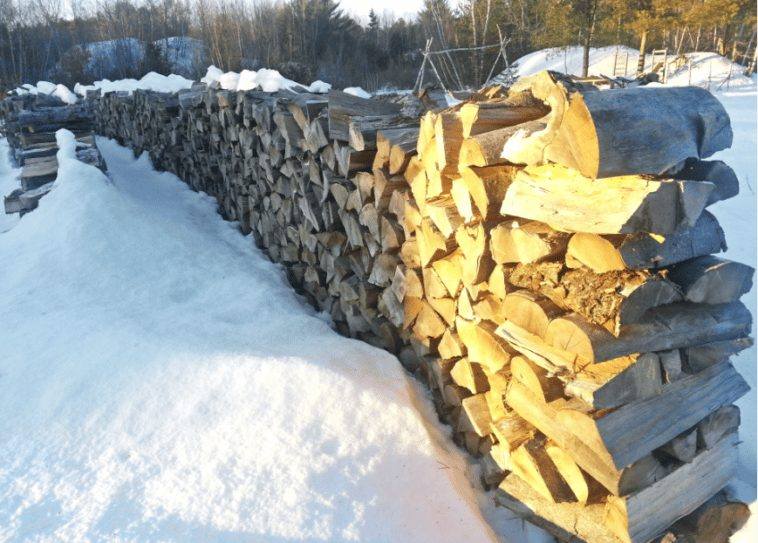ADVERTISEMENT
Solution: Always store firewood in a dry, well-ventilated area. Ideally, place your firewood in a spot where it can get plenty of airflow and sunlight. If you store it in a shed or garage, ensure the area is well-ventilated and has good air circulation.
3. Stacking Firewood Too Tightly
While it’s important to stack firewood securely to prevent it from toppling over, stacking it too tightly can be just as problematic. If the logs are packed too closely together, it limits the airflow between them, which is essential for proper drying.
- Slow Drying: Wood that is stacked too tightly may take longer to dry, resulting in wood that’s too damp to burn efficiently.
- Reduced Ventilation: Poor airflow means the wood can’t release moisture effectively, which can lead to mold growth or rotten wood.
Solution: When stacking firewood, leave enough space between the logs for air to circulate. If possible, create a crisscross pattern that allows for maximum ventilation. This will ensure that the wood stays dry and ready to burn.
4. Covering Firewood Improperly
While it’s essential to keep firewood dry, many people make the mistake of covering their wood with a tarp or plastic in a way that traps moisture instead of protecting it. If your firewood is covered too tightly, moisture can get trapped inside, leading to mold, rot, and an increased risk of pests.
- Trapped Moisture: If the cover is too tight, condensation can build up under the cover, creating a humid environment that makes the wood damp.
- Reduced Drying Time: A poorly ventilated cover can slow down the drying process, leading to longer wait times before the wood is ready to burn.
Solution: Use a loose-fitting cover to protect your firewood from rain or snow. The cover should only cover the top of the woodpile, leaving the sides open to ensure proper airflow. You can also use a firewood shed or lean-to to protect your wood from the elements while keeping it well-ventilated.
Bonus Tip: Seasoning Your Firewood
One additional thing to keep in mind when storing firewood is the importance of seasoning. Wood needs time to dry out before it burns efficiently, and this process can take six months to a year, depending on the type of wood. Seasoned wood has a moisture content of around 20% or less, which ensures a cleaner, hotter burn.
When you store your firewood, make sure to rotate your stock so that the oldest wood is used first. This ensures that the wood has had enough time to dry out properly and is ready to burn when you need it.
Final Thoughts
Proper firewood storage is essential to ensure that your firewood is dry, safe, and ready to burn. By avoiding these common mistakes—storing wood directly on the ground, keeping it in damp or humid places, stacking it too tightly, and covering it improperly—you can ensure that your firewood is in the best possible condition for a safe, efficient fire. Keep these tips in mind the next time you’re preparing your firewood, and you’ll be able to enjoy the warmth and comfort of a crackling fire with ease.
So, before you stock up for the colder months, take a moment to assess your firewood storage. A little preparation now can lead to a better fire and a more enjoyable experience when the weather turns chilly!
ADVERTISEMENT
